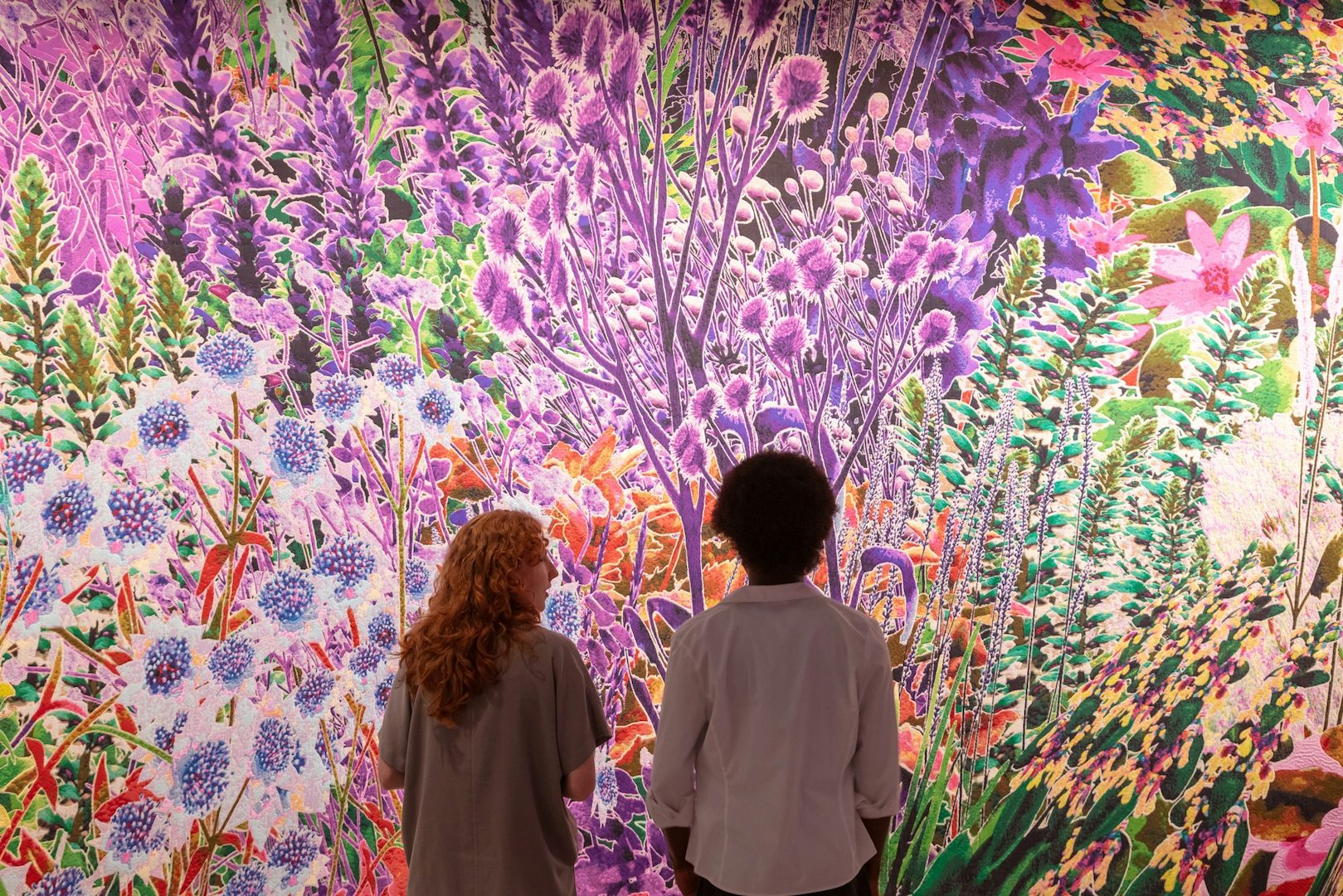Exploring a more-than-human future for design
The Design Museum in London’s new exhibition, More than Human, explores the need for design to address the co-flourishing of species, though avoids offering specific solutions
In the centre of the Design Museum’s latest exhibition, More than Human, is a series of architectural models, colourful and playful in form and material, arranged in a loose cityscape. The structures reveal themselves to be aviaries, pigeon lofts, bat towers, bird feeders, cages, and traps: a city’s worth of structures for birds.
Yet while designed for animals, they are, says Studio Ossidiana co-founder Giovanni Bellotti, “really objects about people”. Ranging from benign garden feeders, to cruel methods of hunting and trapping birds, they reveal “what we do to [animals], the way we transform the world, and impart a bit about how they transform us in return,” he says.
While designers mostly aim to make things better through their work, the achievements of human-centric design are shown to have a more depressing record, including climate change, biodiversity loss and ecocide. This is the starting point of the Design Museum’s show, from which it makes a hopeful departure to “how humans can relearn to design with and for the natural world in the face of climate emergency”.
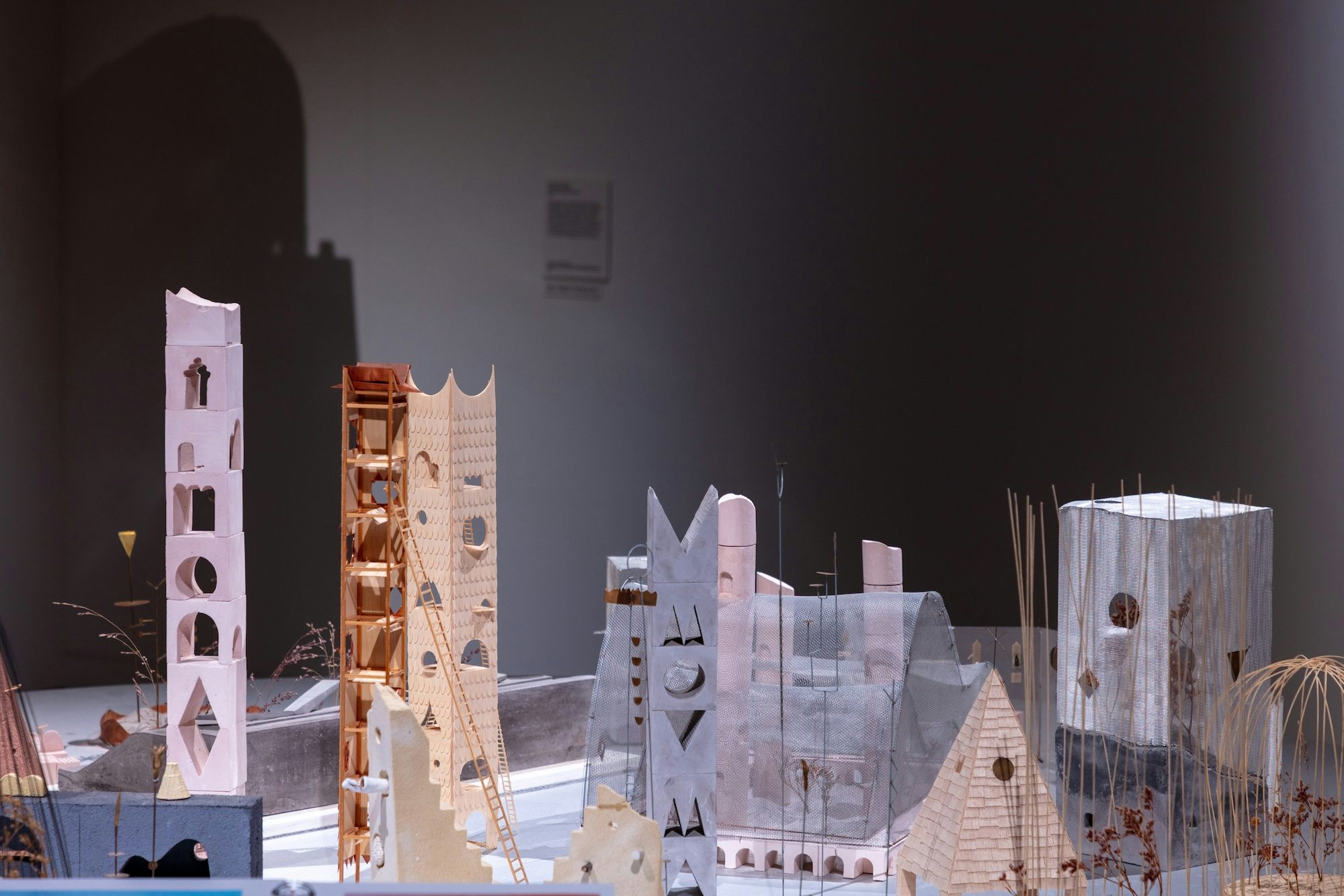
As a seam of thinking that has grown in recent years, the exhibition highlights a number of designers already working to adapt materials and methods to simultaneously meet human needs and those of other species.
To take architecture as an example, US firm Scape Landscape Architecture’s guidelines show simple ways to avoid the numbers of bird deaths caused by building with transparent and reflective glass, while Suomi/Koivisto Architects’ Alusta pavilion or Andrés Jaque’s 3D cork and resin Transpecies Rosette, invite insects, plants and fungi into walls usually built for human use.
Displays of non-human creations contain elegant design solutions: the concentric mud circles of an ant’s nest which act as flood defences, or a hummingbird’s selected mix of materials
There is also an emphasis on ‘relearning’ from older tools and systems eclipsed by more ‘efficient’, yet harmful, modern ones. A series of passive fishing nets, arranged here almost as if a school of fish, is celebrated for enabling fishing that is careful and targeted, compared to intensive methods which maximise yield at the expense of life.
Displays of non-human creations contain elegant design solutions: the concentric mud circles of an ant’s nest which act as flood defences, or a hummingbird’s carefully selected mix of materials: lichen for its antibacterial properties, cobwebs for elasticity, and grass and leaves for camouflage.
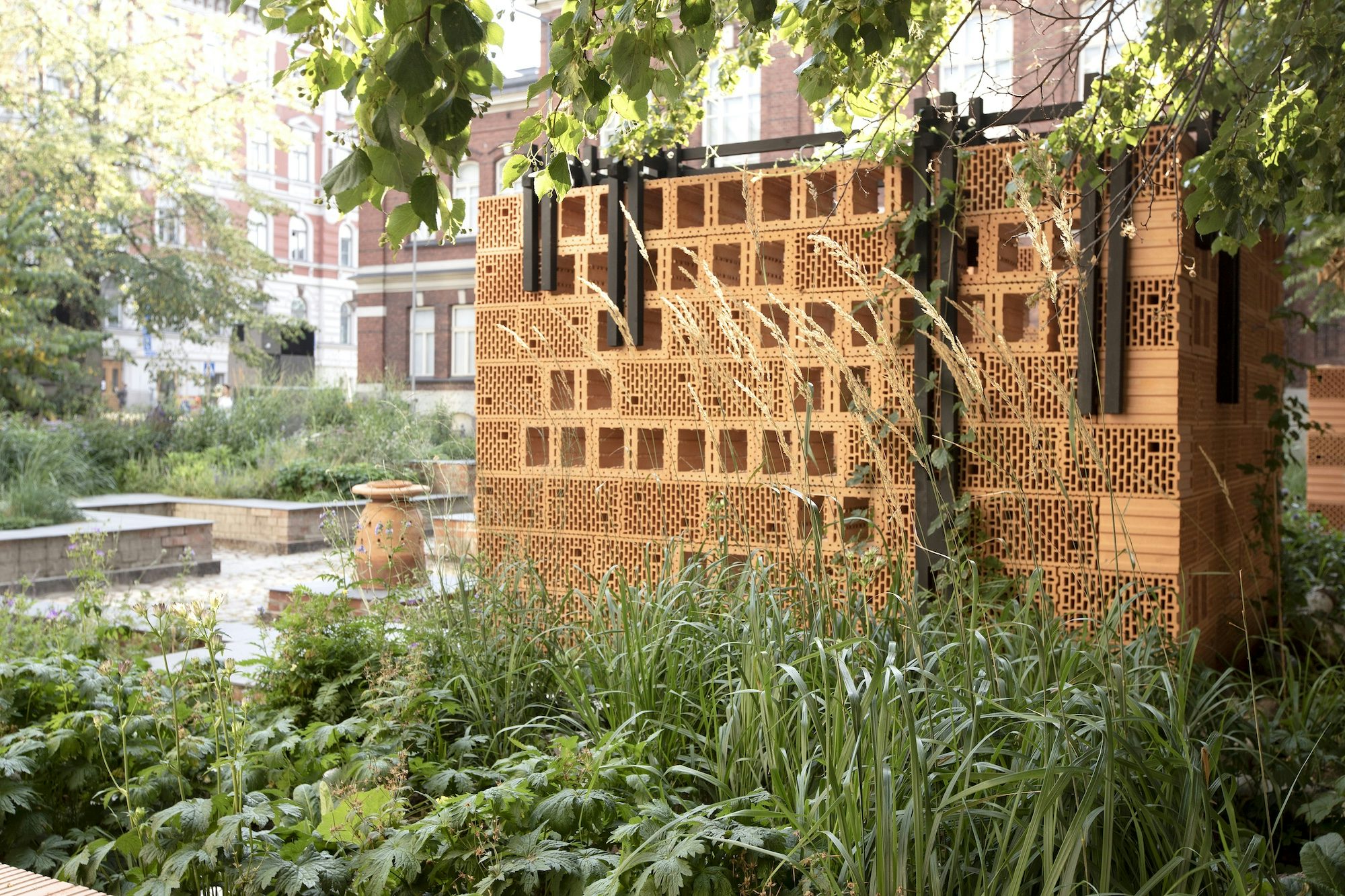

But despite the promise of individual projects, the curators remain cautious of providing immediate ‘solutions’, “which is part of the problem that we think design has developed over the past 100, 200 years,” says co-curator Rebecca Lewin.
With a focus on building narratives instead, the start and end sections suggest space for thinking beyond current Western ideas of design: Being Landscape, which considers traditions more in tune with the natural world, and Shifting Perspectives, a series of speculative attempts to see the world as other species do.
The former includes woven baskets made in the present day by Ye’kuana women of the Venezuelan Amazon, who, considering these to be sacred extensions of the natural world, ask the forest’s permission before taking from it to use its materials. Recalibrating a sense of humanity as part of nature as you enter the exhibition is Marcus Coates’ Nature Calendar, which ties each human date to the natural rhythms of the world. Reading that on the day I visit, July 11, silver-washed fritillary butterflies appear, is evocative, even if you’re not in the position to experience this yourself.
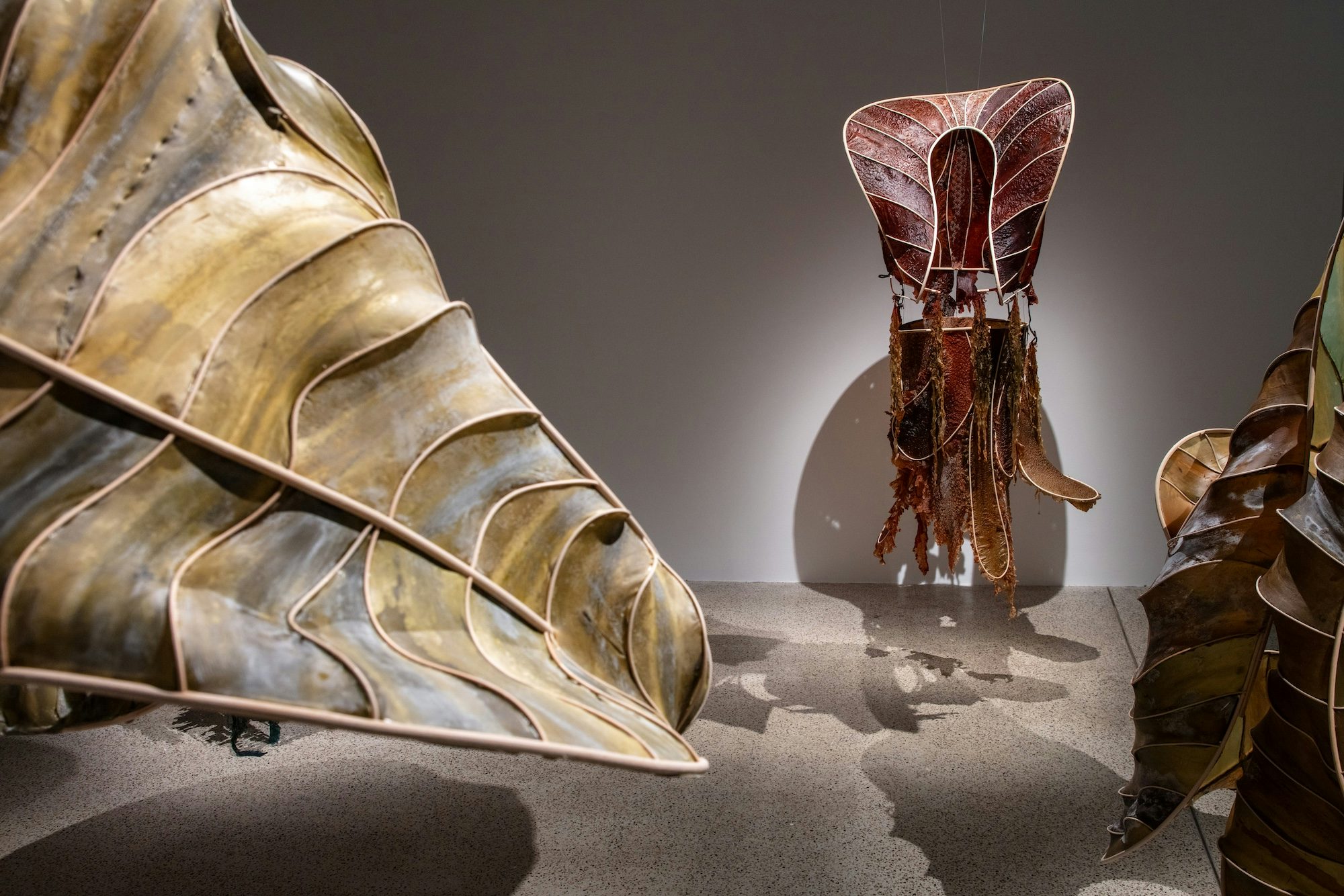
Speculative works have a similar, perspective-widening effect. Dunne and Raby’s experiments in how a passing human would appear in terms of trailing clouds of smell, hormones, or ripples of movement, result in fantastic undulating wooden models, while Alexandra Daisy Ginsberg’s large, vibrant tapestry commission immerses visitors in a pollinator’s view of a garden.
Elsewhere is Nobody Told Me Rivers Dream by Superflux: in place of lost “sensory knowledge”, such as a red sky being a warning of a storm, its three sculptural sensing devices for rivers feed their information into AI that translates it for human understanding. Having trained the AI with Indigenous knowledge, ecological wisdom and folklore – which Superflux co-founder Anab Jain highlights is not part of current datasets – is also a reminder of the limited scope of the technology on which so much current speculation is based on.
Despite the promise of individual projects, the curators remain cautious of providing immediate ‘solutions’, with a focus on building narratives instead
Exhibition co-curator and Future Observatory director Justin McGuirk explains that the intention was to “take a form of design which is still nascent and marginal even, and to put it in the centre of the conversation, which is what a museum can do”. Yet this narrative risks underplaying the existing work (as well as the overall promise of more-than-human design) as lost ancient knowledge, peripheral and limited, or as an unlikely future, such as Ant Farm’s unrealised, psychedelic vision from the 70s for a Dolphin Embassy.
Included near the start is an eight-metre-long illustrated mural looking at the work of Earth rights scholar and lawyer César Rodríguez-Garavito and the More-Than-Human (MOTH) Life Project, which explores using legal instruments to protect more-than-human life. But while the mural is concerned with the worldwide struggle to afford legal rights to waterways, it might be worth noting the impact on design of this topic, given its involvement in designing products that currently pollute or damage these same waterways.
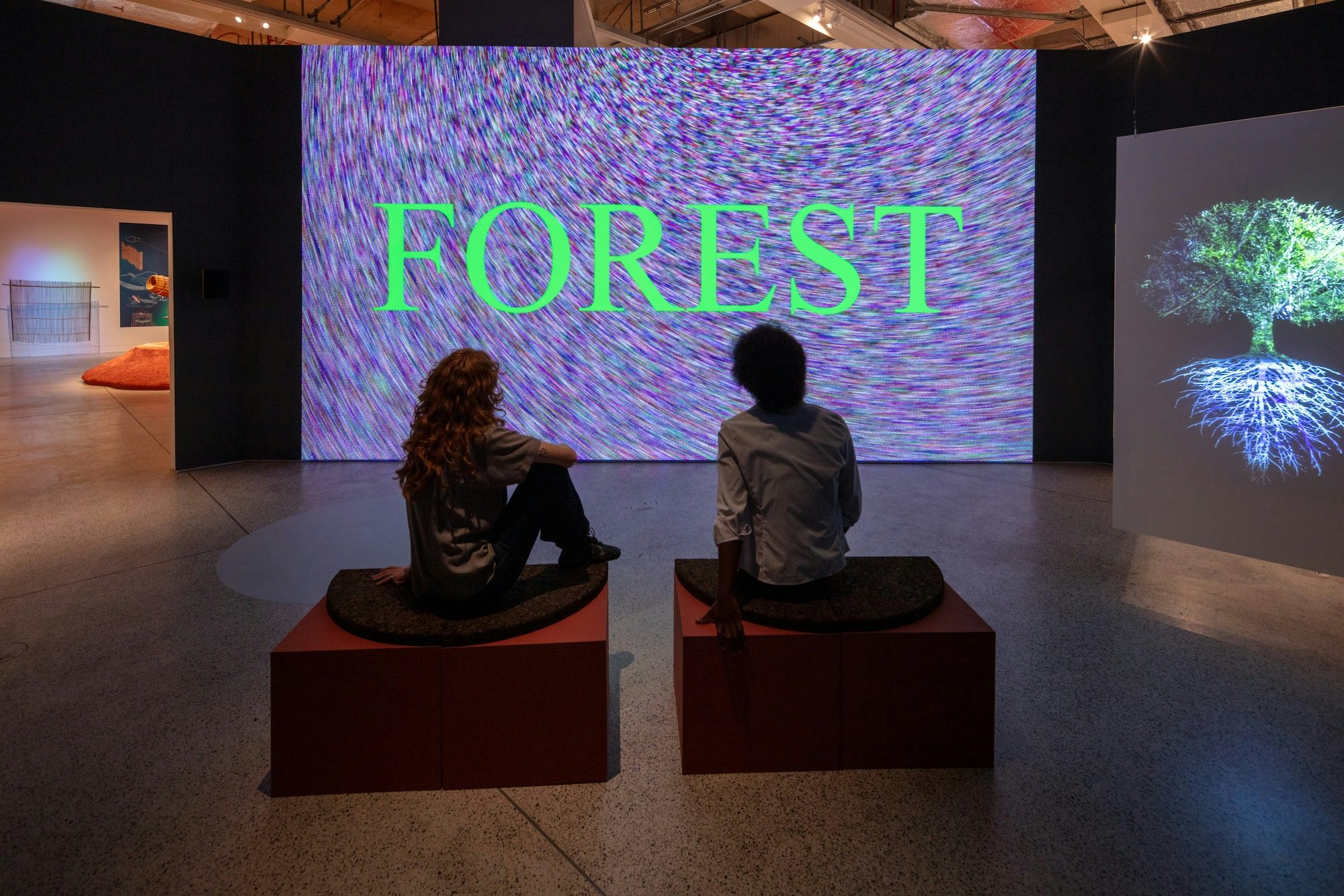

Briefly mentioned, but not explored, is MOTH’s other work in crediting nature in creative projects in order to redistribute profits; the idea of biomimicry is not a focus here but will be familiar to designers having yielded products from fuel-efficient aircraft to anti-reflective surfaces for solar panels – a relationship for which the biologist Janine Benyus, who first coined the term, argues that nature should be compensated.
And while the Design Museum may be hosting the first major exhibition on the subject, other institutions have explored applying more-than-human voices in their wider decision making, such as Future Everything in Manchester, and Rotterdam’s Nieuwe Instituut.
This is the first exhibition co-curated with Future Observatory, the museum’s national and AHRC-funded research programme for the green transition, which has supported more than 100 separate projects to date. Just as the carbon documentation and institutional change that followed the museum’s 2021 exhibition Waste Age was an important part of its impact, some more specific, local action, in addition to wider conversation, could be of interest here too.
More Than Human is on show at the Design Museum in London until October 5; designmuseum.org
